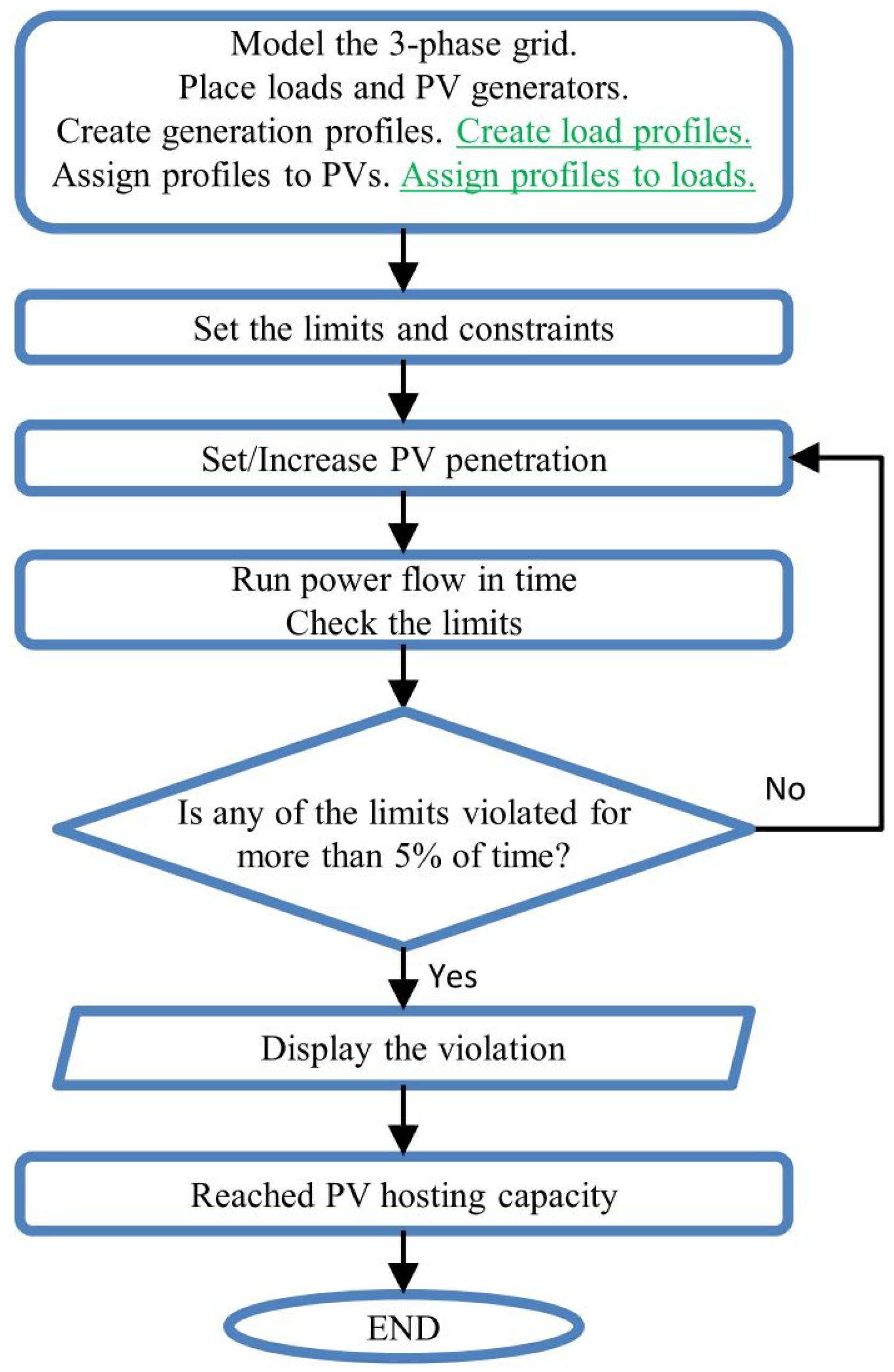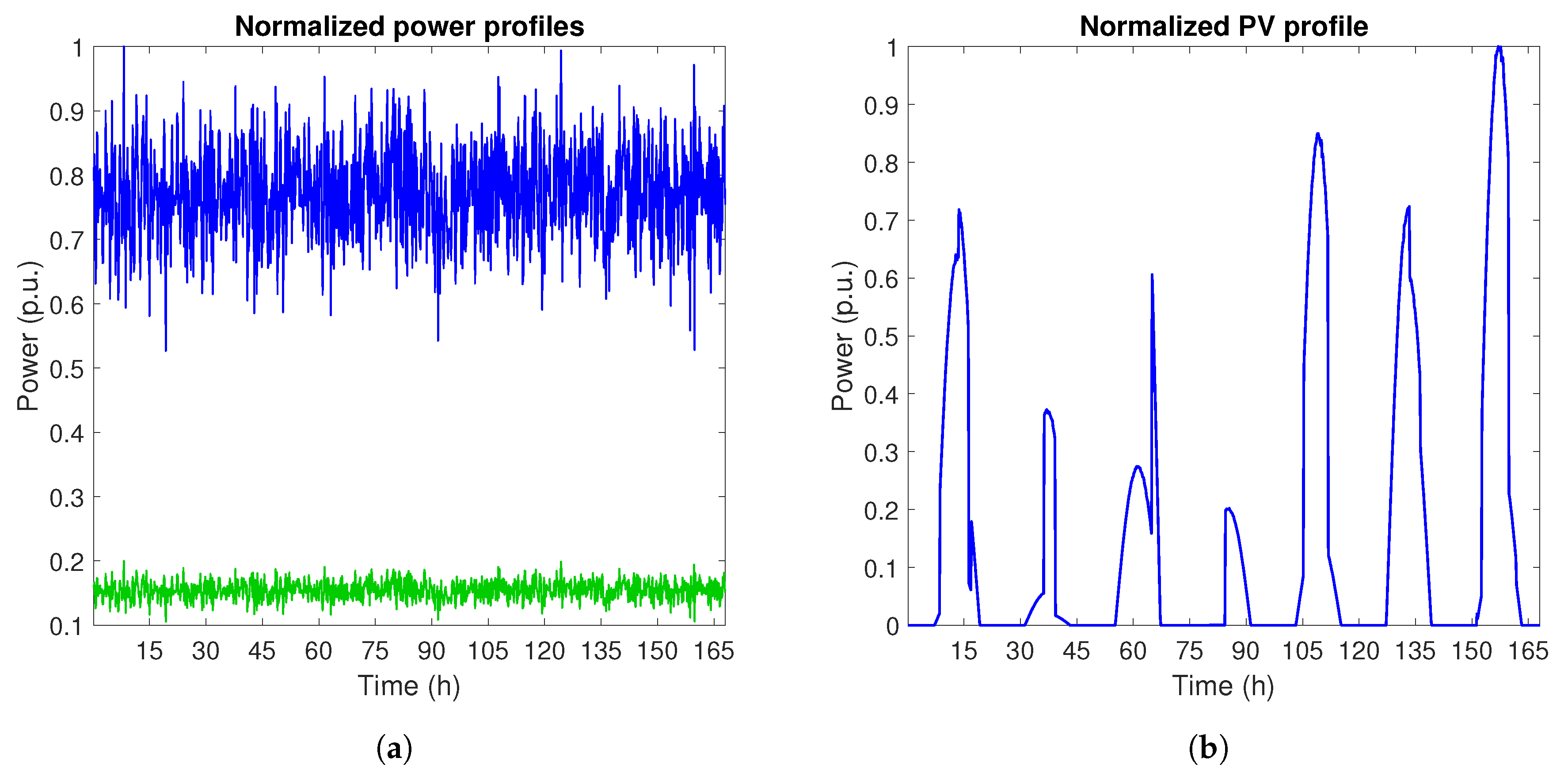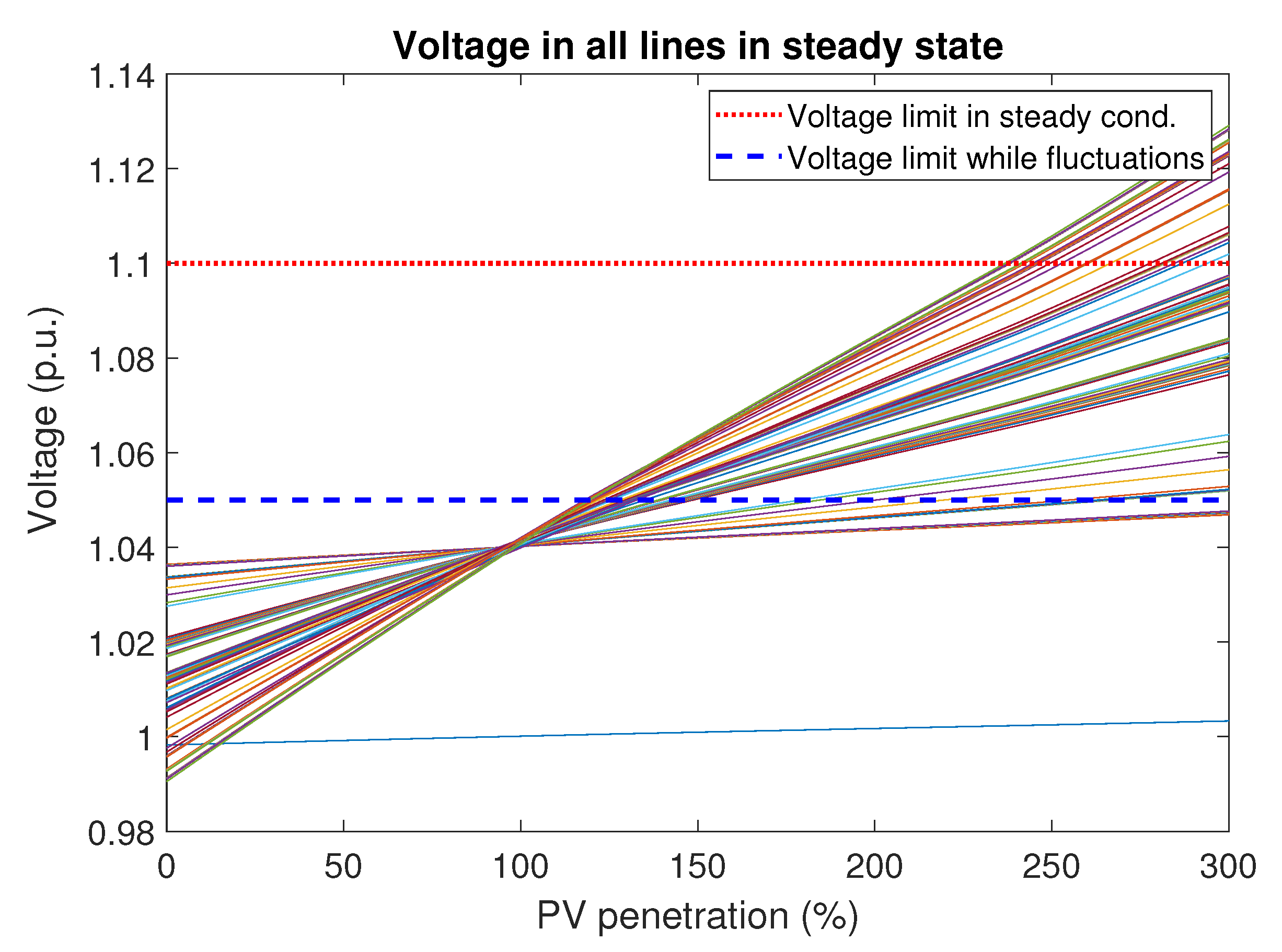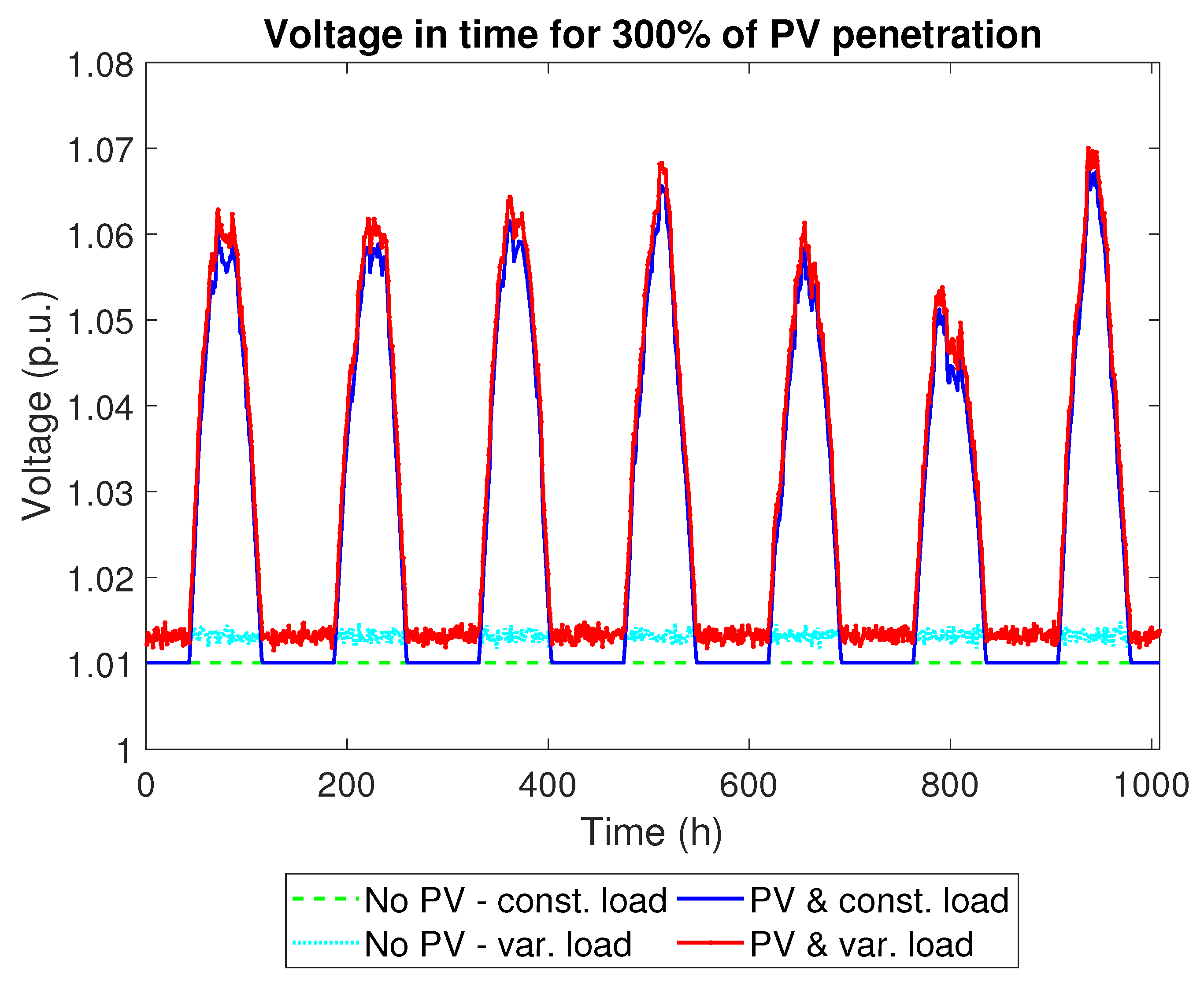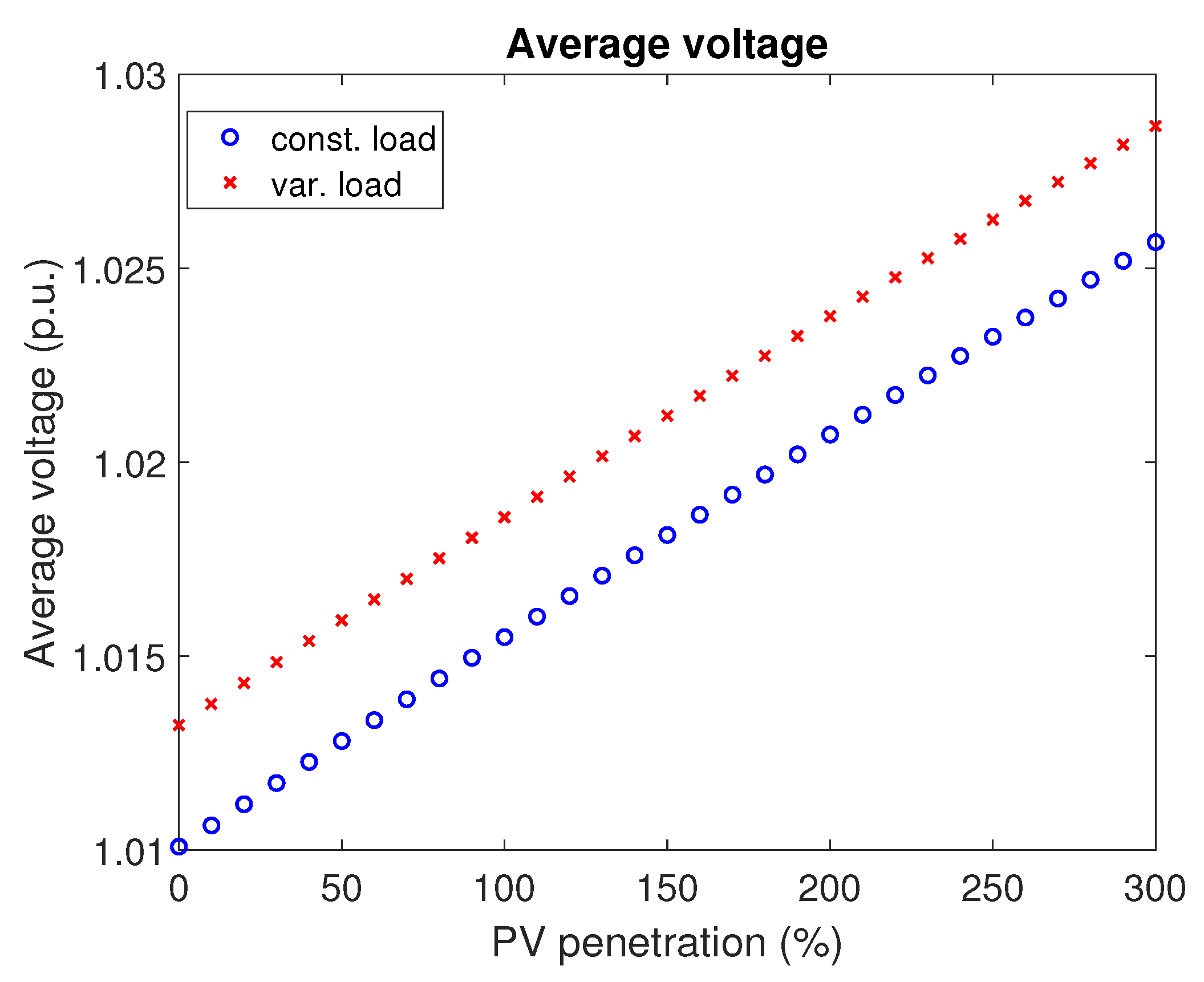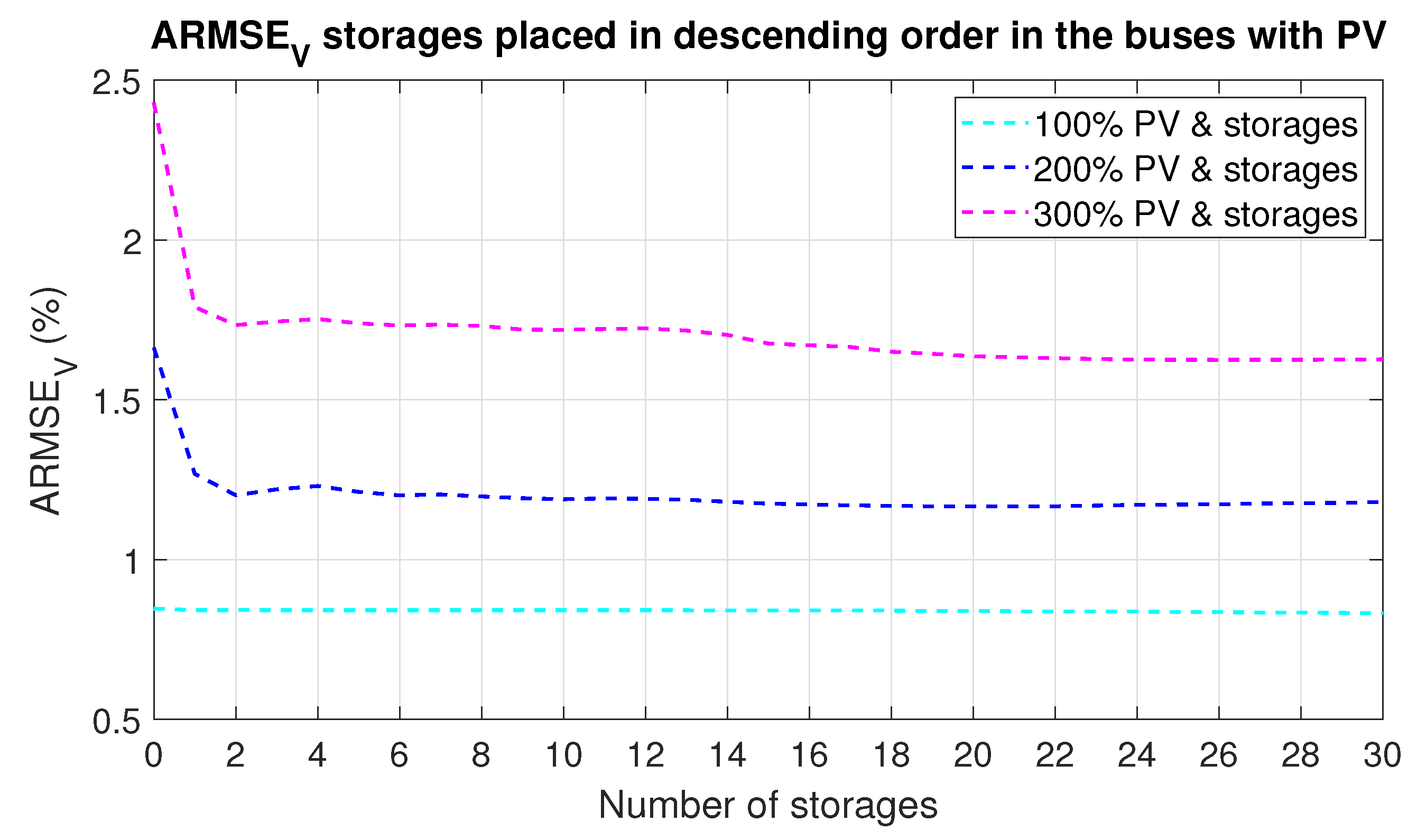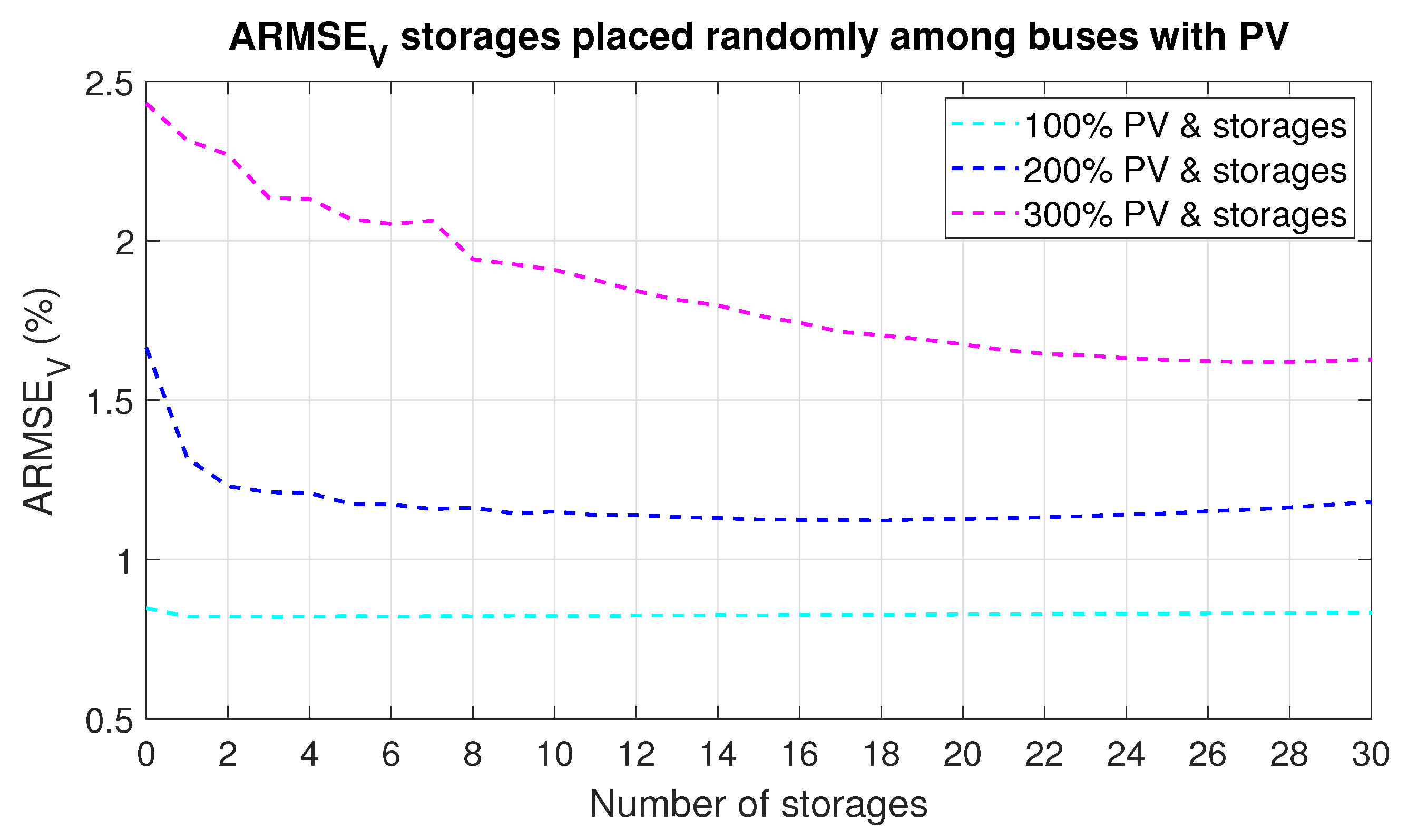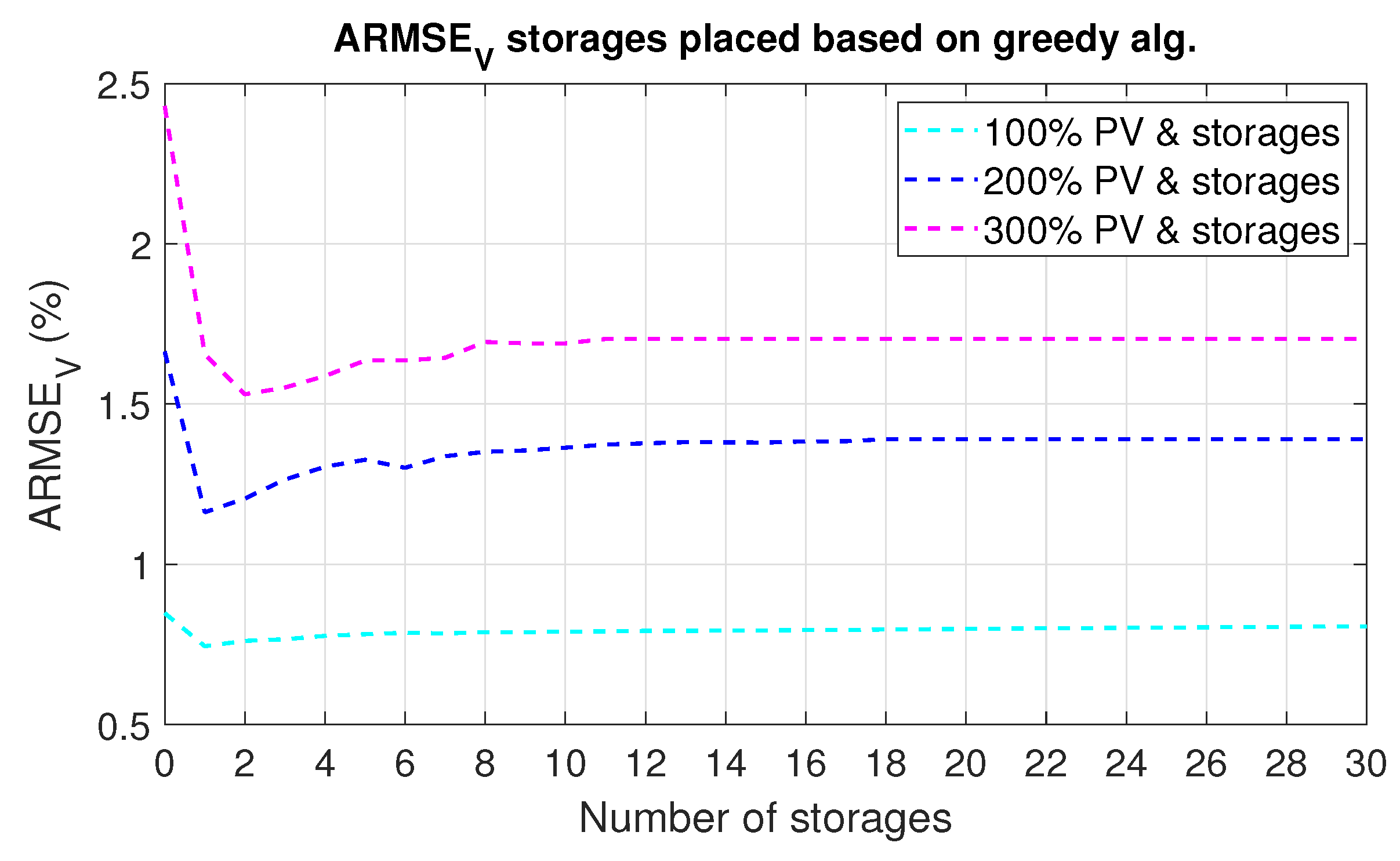In the last few years, the increasing interest to reduce the greenhouse gas (GHG) emissions from fossil fuel utilization is significantly pushing the increase of the renewable energy sources (RES). In Europe, the share of renewable energy in final energy use has doubled since 2005, reaching 17.6% in 2017 and 18% in 2018 according to the European Environmental Agency (EEA) [
1]. Among different RES systems, the photovoltaic (PV) technology plays a central role due to its modularity (it is possible to install a small system on the roof or large field), its efficiency (last PV modules are able to reach 20–25% of power conversion) and cost effectiveness. In the last ten years in the European Union, the grid-connected PV system installations increased from 11.3 GW at the end of 2008 to over 117 GW at the end of 2018 [
2]. This trend will continue in the next years according to the market development to 2030 in order to achieve the emission reduction. The constant increase of PV system integration may affect the proper electrical grid operation causing issues such as voltage deviations, thermal violations, harmonics distortions, which lead to a general poor power quality situations [
3,
4] and problems in protection systems. These problems are particularly stressed if we consider the typical variable nature of RES generation, which is strictly dependent on the weather conditions [
5,
6]. The power quality issues introduced by RES should be a problem to both sides, producer or producer and consumer (prosumer) and Distributed System Operator (DSO). Indeed, for the electricity suppliers, poor power quality may result in higher economic costs such as refunds or fines. For final customers, poor power quality may affect the proper work and lifetime of several devices. For this reason, it is important to quantify the maximum power from PV that can be injected into the grid without affecting its reliability and efficiency. To this purpose, it is fundamental to assess the so-called hosting capacity (HC). There is not a unique method or solution for HC assessment because it really depends on different parameters such as the grid under test, the behavior of the installed RES, the performance index taken into account and the standard limits. However, in [
7], authors indicate three main methods of HC assessment: deterministic, stochastic, and time series. Deterministic analyses use fixed size and location of power sources as well as fixed grid parameters. Examples of this approach are presented in [
8,
9,
10]. Stochastic analyses include uncertainty of PV units, such as size, location, number of PV systems, etc. [
11,
12]. In these approaches, time of observation is shrank to few hours in a day or simply snapshot simulations are done as an example of the worst case, when PV power is maximal and the demand is minimal. The HC is assessed based on the probabilistic function. In opposite, a time-series approach includes the time-variability of PV generation and load over a specified period with an appropriate time step [
13,
14]. Time-series is very often the abbreviation of quasi static time-series (QSTS) analysis that refers to steady-state operating conditions in an electrical grid, where no transients are observed. This kind of approach based on the production-consumption variability over the time tends to be more realistic in the presence of renewable generations due to its different behavior over the year. However, a long observation interval increases significantly the computational time. Thus, many studies provide new techniques to increase the computation efficiency of QSTS analyses [
15,
16], the time of computing is still long, and the analyses are often shortened to one day with 1-h resolution. An example of hourly one day period analysis is presented in [
17]. A stochastic PV deployment with a time series approach is combined; however, the simulation are conducted for light load (the worst case) and a PV profile is the same for every energy source distributed over an entire grid. In [
18], authors proposed a similar probabilistic methodology of PV HC assessment with use of a Monte Carlo method. They improved rooftop PV models by adding variability of every single generator unit. In [
14], four different hourly profiles of PV generation are applied and three PV installation scenarios are investigated to assess PV hosting capacity (PV HC). In these works, the hosting capacity is assessed based on the single violation appearance. Thus, one violation during performed time period is enough to claim maximal PV penetration. A longer period of time—one week simulation with variable load and generation profiles is presented in [
19]; however, the authors focus more on grid modeling than PV hosting capacity assessment in essence. In [
20], the concept of dynamic hosting capacity is presented that is variable and time dependent. For this HC assessment, variable PV profiles and load profiles were applied.
In many works, not only hosting capacity is assessed, but simultaneously some methods to enhance it are proposed [
21,
22]. Reactive power control and power factor correction are the effective way of balancing voltage deviations [
23,
24]. On-load tap changers optimal control also may be a solution for overvoltage and can increase HC as reported in [
25,
26]. Active power curtailment techniques can contribute to HC enhancement by minimizing overloading and thermal problems; however, the economic aspects should be taken into account [
27]. HC based on harmonic distortion constraints can be enhanced by active power filters [
28,
29] or passive filters [
30]. Moreover, battery energy storage system (BESS) utilization is widely discussed [
31,
32,
33] as a method to increase HC by reducing voltage deviation and improving energy balance. In literature, it is commonly assumed that BESS in grids with high RES penetration are sited either as a central storage [
34,
35,
36] or distributed units connected to energy sources [
37,
38]. In [
39], these two arrangements were compared. The authors concluded that both solutions allowed the grid with high PV penetration to operate satisfactorily; however, the option with distributed BESS is more efficient economically. In [
36], authors developed the BESS sizing methodology in order to improve HC of the middle voltage grid with the HV/MV transformer. The BESS capacity was calculated for 2-year time series data in order to avoid overloading caused by additional wind generation. The HC limit was assessed on the basis of the first hour of violation appearance and further was calculated as the percentage of time. At the end, BESS capacity optimization was conducted taking into account the correlation between acceptable violation probability and the point of “diminishing returns”. In [
37], the authors define an objective function as the minimization of voltage deviations and power losses by optimal choice of energy storage capacity, site, and number. They proposed mixed genetic algorithms and constraint programming to solve the problem. In [
38], the genetic algorithm is used to optimal allocate and size distributed ESS. The objective function is voltage rise minimization as well. Moreover, in [
40], the review of energy storage system expansion planing methods is conducted. The most common objective function is minimizing the cost of investment or/and maintenance. The solutions take into account storage and grid constraints.
The presented literature overview shows that there is still a need to study hosting capacity assessment methods, which assure good accuracy and similarity to real grid operation with simplicity of their application. The assessment of HC is of crucial importance for most of the DSO, who are obliged to comply with national energy law and sales contracts. They should anticipate to what extent they can guarantee energy security and ensure power quality with the least amount of work and money. Moreover, it can be seen that there is no single, clear and complete solution for energy storage utilization to mitigate the impact of RES. Still, optimal capacity, location, and number are the variables that should be investigated in detail. Within this context, the present work aims to show a different approach to deploy battery energy storage in order to improve the hosting capacity. In particular, a placement technique based on greedy approach is proposed and compared with other simple techniques. The hosting capacity is assessed using the time-series PV and load profiles over a typical week where the violation limits are inspired by restrictions of the European standard EN 50160.

